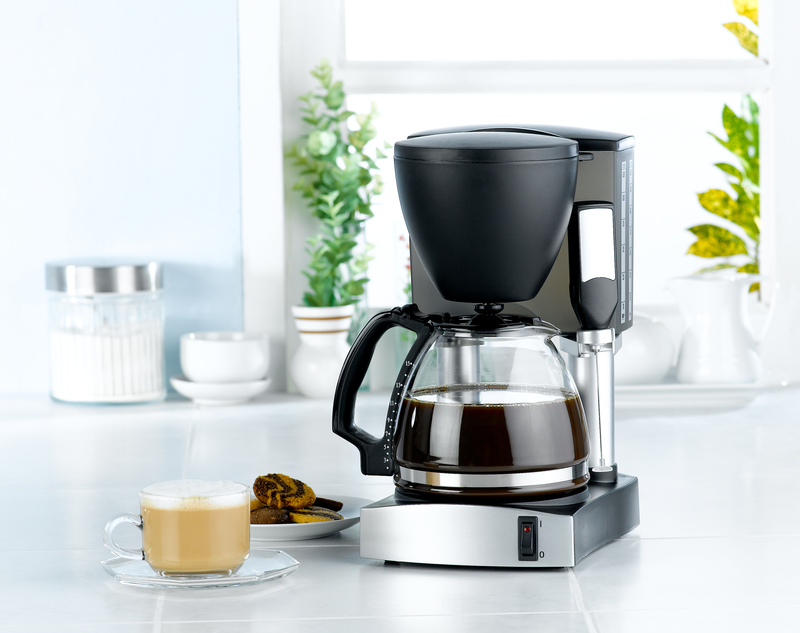Breathe Easy: The Role of Air Quality in Homes and Businesses
Air quality is a critical, yet often overlooked, component of healthy living and productive working spaces. The air within our homes and commercial buildings can be a hidden source of health risks and discomfort. As awareness of indoor air pollution increases, more people are seeking ways to breathe easier and improve the air quality in their indoor environments. In this comprehensive guide, we'll explore why optimal air quality is essential, the risks associated with poor air, and actionable steps to safeguard your home or business against invisible airborne threats.
Why Is Indoor Air Quality Important?
Whether at home or at work, we spend over 90% of our lives indoors. The air quality indoors can be 2-5 times, and sometimes over 100 times, worse than the air outdoors. This puts indoor air pollution at the forefront of environmental health concerns, leading experts and institutions to call for more concerted efforts to ensure clean and healthy air inside buildings.
Understanding Indoor Air Pollution
Indoor air pollution includes a cocktail of contaminants such as dust, mold spores, pet dander, volatile organic compounds (VOCs), bacteria, and viruses. Modern houses and office buildings, designed for energy efficiency, tend to be tightly sealed, which traps these pollutants and makes them harder to remove. Without consistent air quality management, occupants suffer from health problems, reduced productivity, and general discomfort.
What Makes Air Quality So Crucial for Homes?
- Health and Well-Being: Prolonged exposure to poor indoor air can lead to respiratory ailments, allergies, headaches, and fatigue. Vulnerable groups, such as children, the elderly, and those with chronic illnesses, are especially at risk.
- Comfort: High humidity, stale smells, or frequent sneezing are all signs that the air quality at home needs attention for comfort and peace of mind.
- Asset Protection: Clean air helps protect furnishings, electronics, and even the building structure from mold growth and dust buildup.
How Does Air Quality Affect Businesses?
- Workforce Productivity: Poor air in offices can decrease mental performance, cause fatigue, and increase sick leave due to respiratory illnesses.
- Reputation: For businesses like restaurants, hotels, and retail, air that smells unclean or triggers allergies can impact customer experience and brand perception.
- Sustainability: Good indoor air quality supports green building initiatives and can help businesses achieve certifications such as LEED (Leadership in Energy and Environmental Design).

Main Sources of Indoor Air Pollution
Maintaining high air quality in your home or business starts with understanding what affects it. Pollutants can be biological, chemical, or physical in nature, and many originate from everyday activities and materials.
- Building Materials and Furnishings: Paints, carpets, pressed woods, and cleaning supplies often emit volatile organic compounds (VOCs).
- Mold and Moisture: Excess humidity fosters mold and bacteria growth, major contributors to unhealthy air.
- Combustion Appliances: Gas stoves, fireplaces, and furnaces can emit carbon monoxide and nitrogen dioxide.
- Dust and Allergens: Accumulation of dust mites, pet dander, and pollen is common in homes and office settings.
- Poor Ventilation: Insufficient airflow traps contaminants indoors, increasing exposure.
- Outdoor Pollutants: Polluted outdoor air can infiltrate interiors, especially in urban or industrial areas.
Key Benefits of High Air Quality in Homes and Businesses
By making indoor air quality a health and wellness priority, you and your organization unlock a range of advantages:
For Families and Homeowners
- Allergy Relief: Cleaner air means fewer allergens, which can provide significant relief from allergic reactions.
- Better Sleep: Air quality directly affects sleep quality, with clean air reducing stuffiness and congestion.
- Healthier Children: Kids are especially sensitive to toxins; improving filtration and ventilation at home can reduce their risk of asthma and infections.
- Increased Home Value: Buyers and renters are placing more emphasis on healthy home environments and good air quality when making decisions.
For Business Owners and Facility Managers
- Reduced Absenteeism: Employees exposed to fewer indoor pollutants take fewer sick days.
- Enhanced Cognitive Function: Studies show that clean air can significantly boost focus and decision-making.
- Positive Customer Experience: Clients and visitors notice the difference, which can translate into repeat business and referrals.
- Meeting Compliance and Certification Goals: Clean air systems can help meet health regulations and sustainability benchmarks.
Common Air Quality Issues in Homes and Businesses
It's important to recognize the signs of declining air quality to address problems before they become serious health hazards.
- Mold and Mildew: Black spots on walls or ceilings, musty odors, and allergic reactions signal excess moisture and poor ventilation.
- Constant Dust Build-Up: Dust accumulation, even right after cleaning, may indicate faulty filtration systems or air leaks.
- Stale or Unpleasant Odors: Persistent odors are a red flag for poor circulation and hidden contaminants.
- Physical Symptoms: Recurring headaches, dizziness, sneezing, coughing, or sore throats can sometimes be traced back to unhealthy indoor air.
- Humidity Problems: Excessively dry or humid conditions make occupants uncomfortable and encourage the growth of bacteria or dust mites.
How to Measure and Monitor Indoor Air Quality
Assessing air quality is the first step to improvement. Whether you're a homeowner or a business, easy monitoring options exist:
- Air Quality Monitors: These digital devices give real-time feedback on common indoor pollutants like particulate matter, VOCs, carbon monoxide, humidity, and more.
- Professional Inspections: Indoor Environmental Professionals perform detailed audits, sampling strategies, and analysis to pinpoint unseen issues.
- Humidity Meters: Maintaining indoor humidity within 30-50% is crucial for reducing mold and allergen proliferation.
- DIY Observation: Noticing condensation on windows, frequent static shocks, lingering smells, or constant illness are warning signs.
Recommended Air Quality Levels for Health
- PM2.5 (Fine Particles): Less than 12 ug/m? (EPA Standard)
- PM10: Less than 54 ug/m?
- CO2: Should ideally remain below 800 ppm for optimal comfort and focus.
- Humidity: 30-50%
- VOCs: As low as possible (no safe threshold--minimize exposure!)
Effective Solutions for Cleaner Indoor Air
Both temporary and long-term solutions are available to enhance indoor air at homes and businesses, helping you and your occupants breathe easy day in and day out.
1. Improve Ventilation
- Open Windows: Regularly opening windows and doors brings in fresh outdoor air and reduces buildup of indoor pollutants.
- Exhaust Fans: Ensure that kitchens, bathrooms, and laundry rooms have working exhaust fans that vent outdoors.
- Air Exchange Systems: Consider mechanical ventilation or Energy Recovery Ventilators (ERVs) for consistent, controlled airflow--especially in newer, airtight buildings.
2. Install Quality Air Filtration Systems
- HEPA Filters: High-Efficiency Particulate Air filters trap particles like dust, pollen, and pet dander--ideal for allergies.
- Activated Carbon Filters: These filters remove odors and gaseous pollutants like VOCs.
- Whole-Building Solutions: Upgrade HVAC systems with advanced filtration--this benefits both homes and large commercial spaces.
3. Keep Up With Regular Cleaning
- Vacuum with a HEPA-equipped vacuum regularly, especially if you have pets or high foot traffic.
- Dust surfaces frequently to prevent allergen and dust mite buildup.
- Launder bedding, curtains, and soft furnishings to control dust and mold.
4. Control Humidity
- Use a dehumidifier in damp spaces such as basements.
- Repair leaks and seal water entry points promptly.
- Run air conditioners to control heat and humidity during summer.
5. Avoid Introducing Indoor Pollutants
- Choose low-VOC paints, finishes, and cleaning products.
- Ban tobacco use indoors completely.
- Store fuels, pesticides, and harsh chemicals outdoors or in well-ventilated areas.
6. Bring Nature Indoors
- Houseplants such as snake plant, peace lily, and spider plant can help reduce certain indoor toxins (though not a total substitute for other measures).
- Ensure enough light and proper drainage to prevent plant-related mold or humidity issues.
Design and Construction: Building for Better Air
Modern techniques in building design prioritize clean indoor air through careful selection of materials and smart ventilation planning.
- Use of Low-Emission Materials: Insist on formaldehyde-free wood products, zero-VOC paints, and non-toxic adhesives during renovation or construction.
- Smart Layout: Open floor plans and strategic window placement maximize airflow and natural light.
- Dedicated Air Cleaning Systems: For commercial buildings, advanced air purification and UV-C light systems eliminate dangerous pathogens and provide round-the-clock air protection.
- Maintenance Access: Easy access to filters and vents encourages regular checkups and prompt service.
Special Considerations for Businesses
Workplaces face unique air quality challenges due to higher occupancy, equipment use, and regulatory demands. Office buildings, hospitality venues, and medical facilities are expected to maintain near-pristine indoor environments.
- Regular HVAC Inspections: Commercial HVAC systems should be maintained at least quarterly to ensure optimal function and filtration.
- Smart Sensors and Controls: Automated indoor air quality systems detect changes and adjust filtration and ventilation accordingly.
- Employee Training: Encourage staff to recognize and report air quality issues such as unusual odors, visible mold, or water damage.
- Transparency: Many businesses display real-time air quality data for employees and visitors as reassurance and marketing advantage.

Air Quality and the Future: Sustainability and Health
With rising concern for both global and local environmental issues, improving air quality is also a step toward sustainable living and business.
- Energy-efficient, eco-friendly, and health-forward buildings are increasingly in demand as people prioritize well-being and climate considerations.
- Smart air quality monitoring integrates seamlessly with other smart home and building technologies, creating healthier, more energy-efficient, and comfortable environments.
- Governments worldwide are introducing stricter indoor air quality guidelines and codes, further driving innovation and investment in this critical area.
Take Action Today: Breathe Easier for Life
Air quality in homes and businesses is not a luxury--it is a fundamental aspect of well-being, productivity, and sustainability. By recognizing the signs of poor air, monitoring regularly, and implementing the steps outlined above, you can make a significant difference in your life and your loved ones' or colleagues' comfort.
*Take control--invest in smart solutions and best practices for cleaner air. With each breath, you're not only protecting your health but also enhancing your quality of life and workplace satisfaction. Remember, the quality of the air you breathe is just as important as the food you eat or water you drink. Commit to a cleaner, fresher, and safer home or business environment--so everyone can truly Breathe Easy.*


